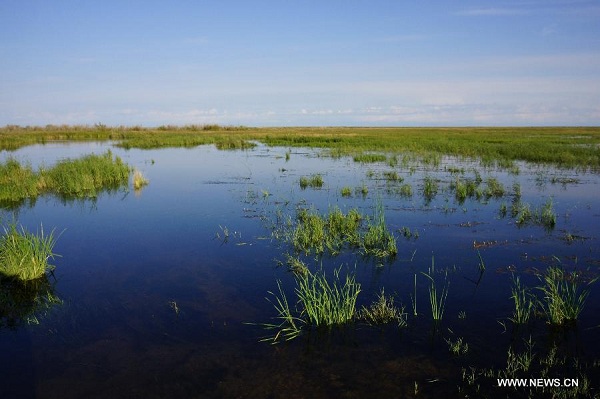Inner Mongolia reports increasing biodiversity in major lakes
Updated: 2019-03-12 (Xinhua)  Print
Print 




This file photo taken on Sept 9, 2013 shows the scenery of the Hulun Nur (Hulun Lake) in Hulunbuir, North China's Inner Mongolia autonomous region. [Photo/Xinhua]
North China's Inner Mongolia autonomous region said three major lakes in the region have seen improved ecological environment and increased biodiversity in recent years.
Local authorities said after taking a series of measures over the past few years, Hulun Lake, Ulan Suhai Lake and Daihai Lake have made great progress in wetlands restoration and biodiversity improvement.
Statistics showed that over 28,000 birds of 61 species summered in the national nature reserve of Hulun Lake last year, 2.5 times more than the figure in 2013.
The number of swan geese, a rare large goose, and the Eurasian spoonbill has increased rapidly from 557 to 5,629 and 95 to 1,359, respectively.
"Birds are especially sensitive to the environment, and the increase of the number and species reflect the great improvement of the ecological environment," said Zou Weidong, deputy director of the management administration of the natural reserve.
Ulan Suhai Lake, located in the north bank of the middle reaches of the Yellow River, is one of the largest freshwater lakes in China. The lake has reported better water quality since all urban sewage and industrial wastewater in the area was disposed of.
The Ulan Suhai Lake wetland waterfowl natural reserve said the number and species of birds and wild terrestrial animals in the natural reserve are growing.
Daihai Lake, the third largest inland lake of the region, has implemented a series of measures in recent years to return reclaimed land into wetlands. The recovering wetlands and prairie have helped protect the water resources and improve water quality, as well as lead to an increase in wildlife.





 Ordos Impression
Ordos Impression Ordos WeChat
Ordos WeChat Ordos Reported
Ordos Reported
